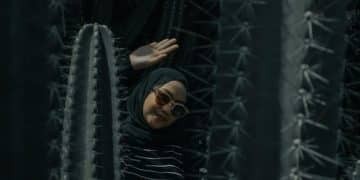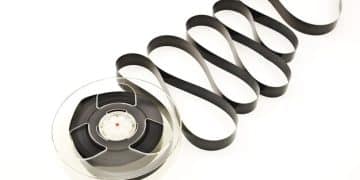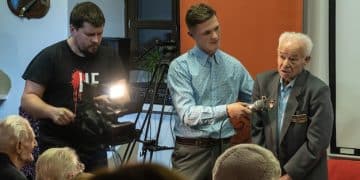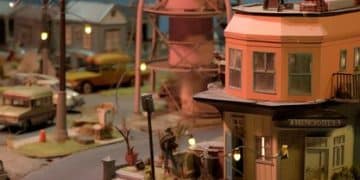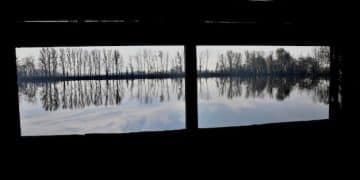Indie Horror’s Enduring Legacy: Forgotten Classics & Modern Thrills
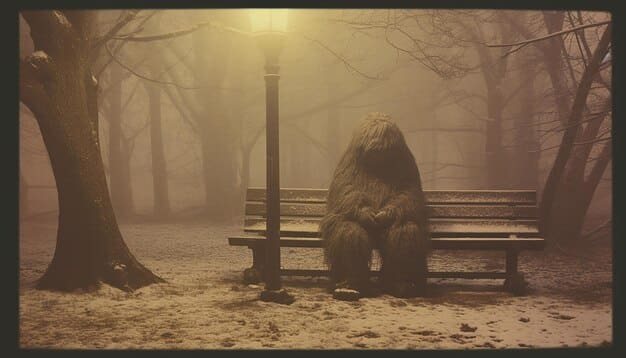
The enduring legacy of indie horror reveals how ‘forgotten classics’ pioneered innovative and terrifying techniques, influencing modern thrillers and proving that budget constraints breed creativity and lasting impact.
Have you ever wondered where the chilling atmosphere and innovative scares of your favorite indie horror films come from? The enduring legacy of indie horror: how ‘forgotten classics’ paved the way for modern thrills lies in the often-overlooked films that dared to break conventions and push boundaries.
The Birth of Indie Horror: Necessity as the Mother of Invention
Indie horror emerged as a response to the limitations imposed by mainstream cinema. With limited budgets and resources, filmmakers were forced to be innovative and resourceful, resulting in unique and unforgettable films.
These early indie horror pioneers laid the groundwork for future generations of filmmakers, proving that big budgets weren’t necessary to create truly terrifying and impactful movies.
The Seeds of Innovation
The lack of funding forced filmmakers to rely on practical effects, creative camerawork, and atmospheric storytelling. This resulted in a distinctive aesthetic that set indie horror apart from its mainstream counterparts.
Challenging Conventions
Indie horror often tackled taboo subjects and explored themes that mainstream films shied away from. This willingness to push boundaries made indie horror a vital outlet for social commentary and artistic expression.
- Practical effects: Low-budget filmmakers mastered the art of practical effects, crafting gruesome and realistic visuals without relying on CGI.
- Atmospheric storytelling: Indie horror often prioritized atmosphere and suspense over jump scares, creating a sense of dread that lingered long after the credits rolled.
- Subversive themes: many movies delved into controversial topics and challenged societal norms, making them more than just simple horror flicks.
The ingenuity and resourcefulness of these early indie horror filmmakers established a foundation upon which later filmmakers could build. They demonstrated that creativity can flourish even in the face of adversity.
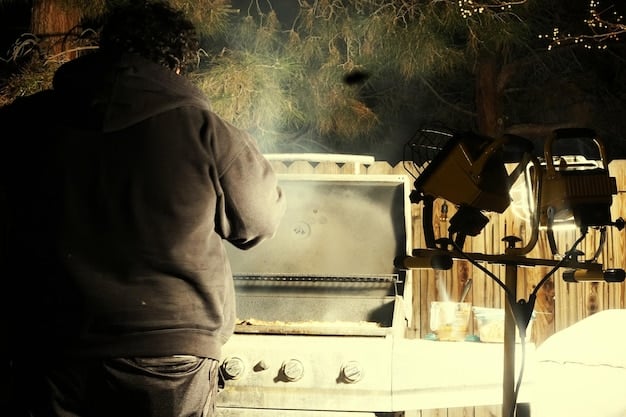
Key ‘Forgotten Classics’ That Shaped the Genre
Several films from the early days of indie horror stand out as particularly influential. These ‘forgotten classics’ not only terrified audiences but also established many of the tropes and techniques still used in indie horror today.
These films often flew under the radar of mainstream audiences, but their influence on the genre is undeniable. They represent the raw, unfiltered creativity that defines indie horror.
‘Night of the Living Dead’ (1968)
George A. Romero’s ‘Night of the Living Dead’ is arguably the most influential indie horror film of all time. Its low-budget production and groundbreaking portrayal of zombies redefined the genre and spawned countless imitators.
‘The Texas Chain Saw Massacre’ (1974)
Tobe Hooper’s ‘The Texas Chain Saw Massacre’ is a visceral and terrifying film that pushed the boundaries of on-screen violence. Its documentary-style camerawork and disturbing imagery created a sense of realism that shocked audiences.
- ‘Night of the Living Dead’ established the zombie genre and demonstrated the power of low-budget filmmaking.
- ‘The Texas Chain Saw Massacre’ redefined on-screen violence and pushed the boundaries of what audiences could stomach.
- ‘Halloween’ popularized the slasher subgenre and introduced audiences to the iconic Michael Myers.
These ‘forgotten classics’ weren’t just scary movies; they were cultural landmarks that challenged conventions and redefined the horror genre. Their impact continues to be felt in modern indie horror.
The Evolution of Indie Horror Techniques
Indie horror filmmakers developed a range of techniques to maximize their limited resources and create effective scares. These techniques have evolved over time, but their roots can be traced back to the early ‘forgotten classics’ of the genre.
From practical effects to sound design, indie horror filmmakers have consistently pushed the boundaries of cinematic innovation. Their creativity has often compensated for their lack of financial resources.
Practical Effects: The Art of the Real
The reliance on practical effects has always been a hallmark of indie horror. Filmmakers have used everything from makeup and prosthetics to homemade props to create gruesome and realistic visuals.
Sound Design: Creating Atmosphere with Sound
Sound design is another area where indie horror filmmakers have excelled. By using unsettling soundscapes and creative sound effects, they can create a sense of dread and unease that enhances the viewing experience.
These techniques are not limited to visual and auditory elements. They also extend to storytelling, character development, and thematic exploration.
- Practical effects provided a visceral and realistic horror experience that CGI often struggles to replicate.
- Creative use of sound design amplified the tension and created an immersive atmosphere, maximizing the impact of scares.
- Unique, character-driven narratives offer deep emotional engagement, elevating the storytelling beyond typical slasher flicks.
By embracing these techniques, indie horror filmmakers have created a unique and distinctive style that sets them apart from mainstream cinema.

The Enduring Appeal of Low-Budget Scares
Despite the rise of big-budget horror films with elaborate special effects, there’s still a strong audience for low-budget indie horror. This enduring appeal can be attributed to several factors.
The intimacy and authenticity of low-budget horror often resonate with audiences in a way that slick, overproduced films cannot. The raw energy and unfiltered vision of indie filmmakers can be incredibly compelling.
Authenticity and Realism
Low-budget horror films often feel more authentic and realistic than their mainstream counterparts. The use of practical effects and real-world locations can create a sense of immersion that draws viewers into the story.
Creative Storytelling
With fewer resources to rely on, indie horror filmmakers often focus on creative storytelling and character development. This can result in more compelling and emotionally resonant films.
Moreover, low-budget scares often rely on psychological elements rather than visual shocks, creating a more profound and lasting impact.
- The gritty feel of low-budget films enhances realism, making the horror more tangible and relatable.
- Stripped-down storytelling centers on suspense and character development, creating deeper audience engagement.
- The focus on psychological horror over visual effects taps into primal fears, resulting in lasting emotional impact.
This enduring appeal demonstrates that scares aren’t about the size of the budget; they’re about the creativity and vision of the filmmaker.
How Indie Horror Influenced Modern Thrillers
The techniques and tropes pioneered by indie horror filmmakers have had a profound influence on modern thrillers. Many of today’s most successful horror films owe their success to the ‘forgotten classics’ of the past.
Indie horror’s impact can be seen in everything from the use of practical effects to the exploration of taboo subjects. Its spirit of innovation and experimentation continues to inspire filmmakers today.
The Rise of the “Elevated Horror” Subgenre
“Elevated horror” refers to horror films that explore complex themes and address social issues. This subgenre owes a debt to indie horror, which has always been willing to tackle taboo subjects.
The Return of Practical Effects
In recent years, there’s been a resurgence of interest in practical effects. Many modern horror films are eschewing CGI in favor of the more visceral and realistic look of practical effects.
The influence extends beyond mere aesthetics. It also encompasses narrative structures, character archetypes, and thematic concerns.
- “Elevated horror” subgenre builds on indie horror’s willingness to address complex social issues within the horror framework.
- Preference for practical effects is reviving a hands-on, authentic style of horror filmmaking.
- Indie horror’s legacy inspires modern filmmakers to explore darker, more disturbing themes that challenge societal norms.
Indie horror filmmakers have paved the way for a new generation of thrillers that are both terrifying and thought-provoking.
The Future of Indie Horror: Innovation and Inspiration
The future of indie horror is bright. With new technologies and platforms emerging all the time, indie filmmakers have more opportunities than ever to create and share their work.
The legacy of the ‘forgotten classics’ will continue to inspire and inform indie horror filmmakers for generations to come. The spirit of innovation and experimentation that defines the genre will ensure its continued relevance and vitality.
Embracing New Technologies
From digital filmmaking to crowdfunding, new technologies are empowering indie horror filmmakers in unprecedented ways. These tools allow them to create high-quality films on a shoestring budget.
Connecting with Audiences Online
The internet has made it easier than ever for indie horror filmmakers to connect with audiences. Online platforms like YouTube and Vimeo provide a space for filmmakers to showcase their work and build a following.
Moreover, collaborative filmmaking and transmedia storytelling are opening new avenues for audience engagement and immersion.
- Emerging technologies democratize filmmaking, making it possible to create high-quality horror on limited budgets.
- Online platforms connect filmmakers directly with audiences, building communities and fostering a global indie horror scene.
- Collaborative and transmedia projects create immersive experiences.
The future of indie horror is one of endless possibilities. As long as there are filmmakers willing to push boundaries and challenge conventions, the genre will continue to thrive and evolve.
| Key Point | Brief Description |
|---|---|
| 💡 Innovation | Low budgets force creative solutions. |
| 🔪 Practical Effects | Gore and scares done realistically. |
| 😱 Lasting Impact | Influencing modern thrillers. |
| 🌐 Accessibility | Connecting with online audiences |
FAQ
▼
An ‘indie’ horror film is typically made outside the major studio system, with independent financing, granting filmmakers more creative control and freedom.
▼
Due to budget constraints, practical effects are often used. They also provide a raw, tangible feel that many fans find more realistic and terrifying.
▼
It redefined the zombie genre and proved low-budget films could achieve mainstream success and have lasting cultural significance.
▼
Elevated horror blends traditional horror elements with complex themes and social commentary, pushing the genre beyond simple scares towards more meaningful narratives.
▼
Explore film festivals (like Sundance and SXSW), indie streaming services, and online horror communities to discover new indie horror gems.
Conclusion
The enduring legacy of indie horror lies not only in its ‘forgotten classics’ but also in its continuing influence on modern thrillers. From pushing creative boundaries with limited resources to tackling taboo subjects, indie horror has profoundly impacted the genre, inspiring filmmakers and captivating audiences with its unique brand of scares and storytelling. As new technologies emerge, the future of indie horror promises even more innovation, ensuring that its legacy will continue to thrill and inspire for generations to come.
